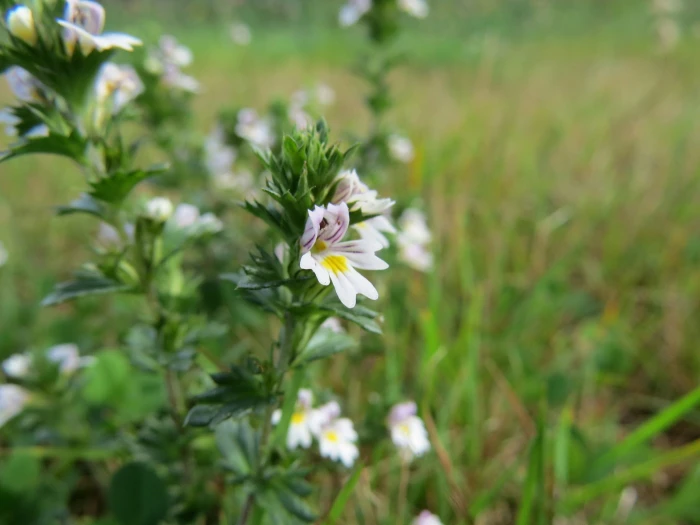Common Eyebright
(Euphrasia nemorosa)
Common Eyebright (Euphrasia nemorosa)
/
/

© Howard Williams
CC BY-SA 4.0
Image By:
© Howard Williams
Recorded By:
Copyright:
CC BY-SA 4.0
Copyright Notice:
Photo by: © Howard Williams | License Type: CC BY-SA 4.0 | License URL: http://creativecommons.org/licenses/by-sa/4.0/ | Uploader: howardw | Publisher: iNaturalist |





















Estimated Native Range
Climate Requirements for Elkridge, Maryland
| This Plant | Your Site | Plant Suitability for Your Location | ||
|---|---|---|---|---|
| • Precipitation | 18" - 136" | 44" | Aquatic | Aquatic |
| • High Temp. | 52°F - 84°F | 88°F | Your summers may be too hot for this plant. | Too hot |
| • Low Temp. | -16°F - 42°F | 24°F | Your winter temperatures are normal for this plant | Excellent |
This plant may not grow well at your location - your precipitation is too high.
Summary
Euphrasia nemorosa, commonly known as Common Eyebright, is a hemiparasitic annual herb native to grasslands, heathlands, and open woodlands across Europe. It has also been introduced to North America and New Zealand. In its native habitat, it often forms symbiotic relationships with various grass species, from which it derives some of its nutrients. Common Eyebright typically grows to a height of 5-15 cm, with a sprawling habit that forms low patches. Its small, white to purple flowers, which are often marked with yellow and have a distinctive lilac streak, bloom from June to September and are highly attractive to bees and other pollinators.
Common Eyebright is valued for its delicate flowers and its traditional use in herbal medicine, particularly for eye-related ailments. It is not commonly cultivated in gardens but can be found in wildflower mixes for naturalistic plantings. It prefers well-drained, nutrient-poor soils and full sun to partial shade. Due to its hemiparasitic nature, it may not be suitable for all garden settings, as it requires host plants to thrive. While generally not problematic, it can be susceptible to powdery mildew in humid conditions.CC BY-SA 4.0
Common Eyebright is valued for its delicate flowers and its traditional use in herbal medicine, particularly for eye-related ailments. It is not commonly cultivated in gardens but can be found in wildflower mixes for naturalistic plantings. It prefers well-drained, nutrient-poor soils and full sun to partial shade. Due to its hemiparasitic nature, it may not be suitable for all garden settings, as it requires host plants to thrive. While generally not problematic, it can be susceptible to powdery mildew in humid conditions.CC BY-SA 4.0
Plant Description
- Plant Type: Herb
- Height: 0.75-1 feet
- Width: 0.25-1.25 feet
- Growth Rate: Moderate
- Flower Color: Purple, White, Yellow
- Flowering Season: Summer, Fall
- Leaf Retention:
Growth Requirements
- Sun: Full Sun, Part Shade
- Water: Medium
- Drainage: Medium, Fast
Common Uses
Bee Garden, Butterfly Garden, Low Maintenance
Natural Habitat
Native to grasslands, heathlands, and open woodlands across Europe
Other Names
Common Names: Eyebright, Woodland Eyebright
Scientific Names: Euphrasia nemorosa, Euphrasia americana, Euphrasia americana var. canadensis, Euphrasia caerulea, Euphrasia canadensis, Euphrasia cebennensis, Euphrasia curta var. rupestris, Euphrasia glabrescens, Euphrasia glabrescens
GBIF Accepted Name: Euphrasia nemorosa